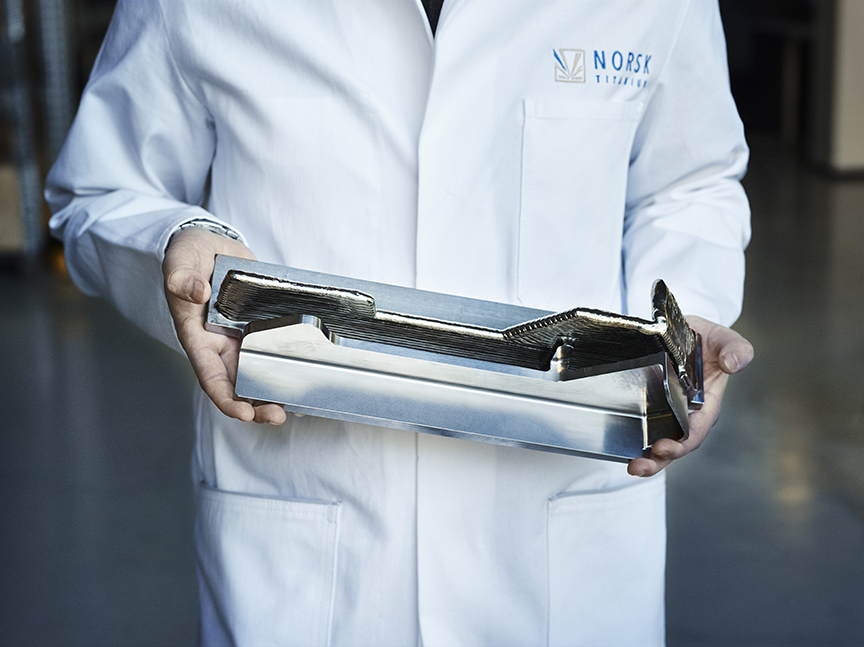Norsk Titanium, a Norwegian company that supplied the world’s first aerospace-grade, 3D printed titanium components for Boeing, has been officially added to the Qualified Producers List (QPL) for the multinational aircraft corporation through its Plattsburgh, New York Development and Qualification Center (PDQC).
This milestone follows a string of successes for Norsk, including the approval from the Federal Aviation Administration (FAA) and achieving AS9100D quality management certification from SAE International.
Tamara Morytko, Chief Operating Officer of Norsk Titanium stated:
“We could not be prouder of our Plattsburgh, New York production operations as they put another stake in the ground for the continued success of Norsk Titanium and the state of New York.”

Rapid Plasma Deposition technology
In 2017, Norsk announced a 60% expansion of the PDQC facility in partnership with the state of New York to meet the increasing demand of Norsk’s products within the north country’s aerospace sector.
“Norsk Titanium’s continued expansion in production, as well as facilities, is great news for the local economy and the North Country’s advanced manufacturing sector,” stated Howard Zemsky, CEO and President of The New York State Urban Development Corporation.
The facility currently houses nine Merke IV additive manufacturing machines, that operate using Norsk’s patented Rapid Plasma Deposition (RPD) technology. A type of directed energy deposition (DED), RPD melts a titanium wire feedstock in an inert argon environment. According to Norsk, “The result is significantly less machining, and ultimately, a 50%–75% improvement in buy-to-fly ratio compared with conventional manufacturing methods.” This method is also much faster than powder-based systems.
Last month, the PDQC initiated production for aerospace titanium components under the Boeing contract.

Aerospace and metals
Many organizations have noticed the increasing use of metals such as titanium within the aerospace sector. Due to its strong, lightweight and complex properties, titanium materials are used within numerous current applications such as aircraft frames, jet engines, and internal nuclear components.
Recognizing this, SAE International has recently issued four new standards to support the certification of metal 3D printed parts for use in aircraft and space exploration vehicles.
Additionally, the high-technology engineering group, Sandvik has announced plans to open a specialist additive manufacturing materials production plant in Sweden that will focus on the mining and production of fine metal powders made from titanium and nickel.
The PDQC has also begun operations for future production of metal components for American Aircraft manufacturing company, Spirit AeroSystems.
Catch up with the latest in additive manufacturing by subscribing to the 3D Printing Industry newsletter. Also, follow us on Twitter, and like us on Facebook.
Looking for a change of pace or seeking new talent? Search and post 3D Printing Jobs for opportunities and new talent across engineering, marketing, sales and more.
Featured image shows the Boeing 787 Dreamliner. Photo via Boeing.


